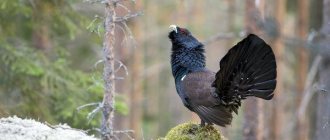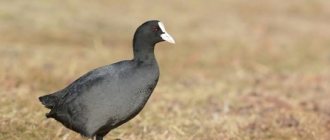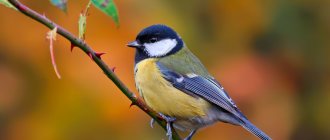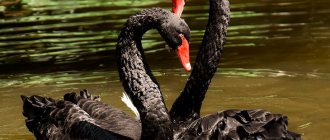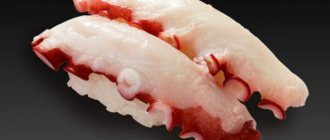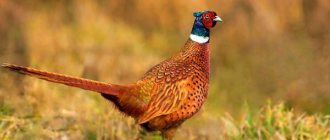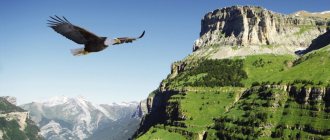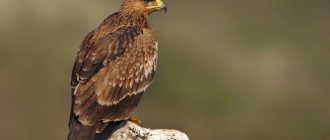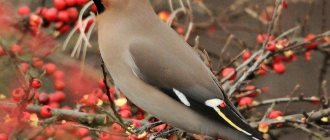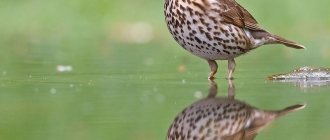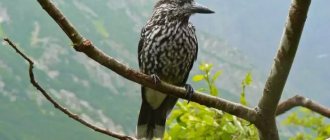These two birds are members of the pheasant family. In addition, they are united by the fact that these representatives have become the most common prey for hunting in the central zone of our country. However, the grouse's habitat is much wider, and its population is much larger. But the capercaillie also attracts the attention of hunters. If we consider how the black grouse differs from the wood grouse, then these related individuals have many external differences. Their meat also cannot be called the same. Therefore, the cooking options and recipes that are used for black grouse cannot be used for preparing wood grouse. This raises the question of how black grouse and capercaillie are similar, as well as their differences.
Comparison
The capercaillie is the largest bird of its family.
It can be found in Eurasia in coniferous, deciduous or mixed forests and swamps rich in berries, in the subarctic and temperate climate zones. The black grouse is the most common bird of its family. It can be found on forest edges, in forest-steppe, and in river valleys.
These birds especially love birch groves. Black grouse are distributed within the temperate climate zone of Eurasia.
Capercaillie have a rounded tail, like a turkey's, and are distinguished by elongated feathers in the form of a beard on the throat. These animals are characterized by the phenomenon of sexual dimorphism.
The average weight of a male is five kilograms. A sexually mature male reaches a length of 110 cm and has a wingspan of 1.4 m.
The male is more intensely colored than the female. It has brown-black feathers on its head, neck, back and tail.
There are characteristic white spots on the tail. The chest has a blue-green-black tint, and the wings are black-brown.
The animal's beak is bare and pink-beige in color. A female capercaillie weighs about two kilograms.
Expert opinion Smirnov Alexander Stanislavovich Wilderness survival instructor. More than 15 years of teaching experience. It has a variegated color with a predominance of ocher-brown-black feather colors. The throat, chest and upper part of the wing are distinguished by a predominance of buffy tint.
The phenomenon of sexual dimorphism is very pronounced in black grouse. Males and females, without knowing it, can be mistaken for representatives of different species.
The male weighs on average about 1.2 kg, the female - 0.9 kg. The length of the male is 55 cm, females – 43 cm.
Both animals have a small, neat head and a short beak. The male has black plumage.
The feathers on the head, neck and chest have a blue-green tint. There are white spots on the wings.
The tail is lyre-shaped. The female has a monotonous pockmarked color, in which gray, brown and green tones are mixed.
Wood grouse are sedentary birds. During the day they are on the ground and spend the night in the trees.
They fly hard and over very short distances. They feed on tree buds, berries and needles.
Black grouse lead a sedentary and nomadic lifestyle. In summer they walk on the ground, in winter they spend time in trees or burrowing in the snow.
They can fly several tens of kilometers at a time. Black grouse prefer to feed on plant buds, berries, and needles.
Chicks of both species readily eat insects as a valuable source of protein.
Wood grouse are polygamous. One male can have up to ten hens in his harem.
For them, the capercaillie begins to display in the spring. At the same time, he loses his vigilance and “stalls out”, so he becomes an easy prey for hunters.
Mating and the accompanying mating process last for about a month. After this, the females lay from 6 to 16 eggs in a nest - a hole in the ground lined with plant material.
The female incubates the clutch herself for 26 days. She independently raises the chicks and “puts them on the wing.”
Black grouse are herd animals and are polygamous. In April, the male begins mating and mating. For the nest, the female uses a hole in the ground, where she lays five to nine eggs and incubates them for 24 days. The female independently trains and raises the offspring.
Expert opinion Smirnov Alexander Stanislavovich Wilderness survival instructor. More than 15 years of teaching experience. The capercaillie is the largest bird of the grouse subfamily. It differs from other representatives of the subfamily by its strongly rounded tail and elongated feathers on the throat. Lives in coniferous, mixed and deciduous forests of Eurasia.
The size of males reaches 110 cm or more, the wingspan is 1.4 m, and the weight is 4.1-6.5 kg.
The capercaillie flies heavily, with a lot of noise, often flapping its wings, and does not make long flights. Usually spends the day on the ground and spends the night in trees.
Wood grouse are objects of sport and commercial hunting.
Distributed in all forests of Europe and Asia, in Siberia in the east to Western Transbaikalia.
Tundra partridge
This partridge is medium in size. The body is dense, the head is small, the relative length of the wings is somewhat longer than that of other grouse birds, the tail is relatively short and slightly rounded. In winter the toes are fully feathered.
The tundra partridge lives in the arctic and moss tundras, subalpine and alpine mountain belts, and to the north it penetrates further than other grouse birds. Like the white partridge, this species has a circumpolar distribution, but its range is less extensive and has a more complex configuration. The tundra partridge lives in the north of the Kola Peninsula, the northern parts of the Ural Mountains and the Yamal and Gydan Peninsulas, on Taimyr and in the Yakut tundra. Further, the northern border of the range runs mostly along the coast of the mainland, and the southern border covers the Verkhoyansk Range and the Aldan Highlands and along the southern slopes of the Stanovoy Range reaches the coast of the Sea of Okhotsk. Within the indicated boundaries there are no partridges in the lowlands of Kamchatka, the valleys of Anadyr and Penzhina, and the tundras of the lower reaches of Kolyma and Alazeya. The tundra partridge also inhabits the mountain systems of Altai, Sayan and Khamar-Daban, and is found on the Commander and Kuril Islands and Franz Josef Land. This species lives in North America, Greenland, Iceland, Spitsbergen, the northern parts of Great Britain and Scandinavia, and the Alps and Pyrenees. Within the range of partridges, 26 subspecies are distinguished.
The color of the plumage in winter is white, with the exception of black tail feathers (at their ends there are white apical stripes), a black beak and dark claws. The shafts of the primary flight feathers are also dark. Males have a so-called “frenulum” - a black stripe running along the sides of the head from the corner of the mouth through the eye. Females do not have such stripes; only some individuals have individual black feathers in these places.
In spring, males acquire their breeding plumage, characterized by the presence of brown feathers scattered over the head, neck and shoulders. Females do not have spring plumage. The summer outfit is variegated: the color of most of the body is formed by gray feathers with transverse black, white and yellowish stripes, the belly and wings remain white.
The autumn outfit is similar to the summer one, but white winter feathers are already appearing in it. The winter moult is extended, which is an adaptation of birds to living in landscapes where snowless areas of the tundra alternate with spaces covered with snow.
In general, in appearance, the tundra partridge is very similar to its relative, the white partridge, and in field conditions (especially in winter) it is not easy to distinguish them. The tundra duck differs from the latter in the grayer color of its plumage during the snowless period, the dark claws and shafts of the primary flight feathers, the presence of a “frenum” in males, a thinner and more graceful beak and somewhat smaller size.
The tundra partridge leads a predominantly terrestrial lifestyle and moves well both on hard ground and loose snow. Like ptarmigans, in winter the birds sometimes fly up into trees when feeding, but this behavior is observed much less frequently among tundra birds. The periods of feeding activity are morning and evening. In winter, when daylight hours are short and feeding time is limited, daytime rest is poorly expressed.
In winter, tundra partridges keep in flocks, which, however, are smaller in size than those of white partridges, and, as a rule, do not exceed 60-90 individuals. The most common are flocks of 5-10 birds. In places where they live together, white and tundra partridges often stay in the same flocks; the ratio of species in this case, as a rule, is in favor of the former. Living in mixed flocks, tundra partridges largely adopt the behavior traits of white partridges: they stay in stages that are not typical for them - willow forests, become more cautious and, in case of danger, are guided by the reaction of their more “vigilant” relatives. The tundra partridges themselves are very trusting birds: in every second case, even a relatively large flock of them can be approached quite openly to 40-50 meters before they begin to show signs of anxiety. Solitary birds allow a person to approach even closer, and it is often possible to approach them by 5-10 m. If you do not make sudden movements, the birds do not take off, but try to run away.
Tundra partridges are silent. Only during the breeding season or on the eve of it can you hear the male’s voice, reminiscent of a booming “Crrrr...”. The female makes quiet moaning sounds.
The favorite habitats of tundra partridges are rocky tundras, characterized by alternating stone placers and areas with grassy, moss, lichen or sparse shrub cover. In lowland tundras, partridges usually stay on the tops and slopes of hills. These birds avoid thickets of bushes during the snowless period. In winter, the distribution of partridges is determined by areas of the tundra bare of snow, where the birds can find food. In many areas they migrate from the breeding area. In wintering areas, they stick to shrubs (alder forests, dwarf birches, dwarf cedar thickets, and, less commonly, willow forests), since their buds and catkins form the basis of the birds’ diet during this period.
The diet of tundra partridges within their range is very diverse. During the snowless period, the basis of the diet consists of seeds of various plants, flowers and leaves of blueberries, blueberries, andromeda, bulbs of viviparous buckwheat, berries, leaves and stems of crowberries, blueberries, lingonberries and bearberries, leaves of dryad and various types of willows, moss boxes. In the north of the Far East, along with the listed food, birds eat dwarf pine nuts. Animal food is rare in the diet of adult partridges, more often in chicks, although they are not as important in their diet as in other grouse birds.
Tundra partridges are monogamous. Birds become sexually mature by the end of the first year of life. In spring, the male occupies a nesting site, which protects it from invasion by others. First of all, birds occupy territories freed from snow. As a rule, males display in the morning and evening hours.
The timing of nesting is determined by the geographical location of the area and weather conditions in the spring. The nest is primitive and differs little from the nests of other grouse birds. Usually the female makes a nest in an open place among stones or low shrubs, sometimes among hummocks; the mottled grayish color of the female’s plumage makes her invisible against the background of the surrounding area. The size of a complete clutch usually ranges from 5 to 9 eggs, although in some cases it may be larger. Incubation duration is 20 days. The chicks leave the nest a few hours after hatching. One-day old chicks weigh 13-14 g. The chicks grow quickly and at the age of 10 days they can already flutter, and after one and a half to two months they reach the size of their parents.
In most of their range, tundra partridges make seasonal migrations. The direction of migration of partridges is determined primarily by the direction of the river beds along whose valleys the partridges migrate. The return of tundra partridges to their nesting sites is timed to coincide with the beginning of intense snowmelt.
Black grouse (or black grouse)
The black grouse is a ground bird, but in the cold season it stays in trees, where it obtains food for itself. It moves on the ground like a domestic chicken - it runs quickly and takes off almost vertically.
The size of a flock of black grouse can vary widely - individual cases of up to 200-300 individuals in one group are known.
Expert opinion Smirnov Alexander Stanislavovich Wilderness survival instructor. Teaching experience for more than 15 years With the beginning of spring, males gather together in the so-called “lekking areas” - open places surrounded by forest or thickets of bushes, where the killer whales “lekking” - they behave animatedly, muttering, chuffing and chasing each other.
In winter, flocks, as a rule, stay in trees - usually birches, where they feed on buds. After dusk, they hide under the snow, forming a tunnel with a camera at the end. On frosty days at temperatures below minus 20 °C, birds are able to spend up to 23 hours a day there, going outside only to feed.
A bird that lives in the forest, forest-steppe and partly steppe zones of Eurasia, including in Russia. Throughout the entire range there are sedentary or nomadic birds; settles on forest edges, along the edge of the forest, in the valleys of large rivers. Black grouse is an object of hunting.
Interesting Facts
Capercaillie are the most valuable hunting species, although their commercial numbers have remained in some areas. Even at the beginning of the 20th century, many habitat areas of wood grouse were known in the Moscow region, and some representatives even lived in Izmailovsky Park. Now this bird is not even closer than 100 km from Moscow.
Grouse and wood grouse are similar birds; sometimes female wood grouse mate with male grouse and then asexual chicks are born.
In order to distract natural enemies from the nest, the female pretends to be wounded and leads them away from the chicks.
At the beginning of September, mature males leave their home, while older females live with their mother for some time.
The common capercaillie in many areas of both Russia and the rest of the world has become a rather rare inhabitant, in some places it has completely disappeared, and now various methods are being adopted to protect the species. The bird is listed in the Red Book of Russia. To clarify the number, concentration and status of this bird in Russia, careful and lengthy research is needed.
Common pheasant
It is one of the domesticated birds and is a common object of hunting.
The common pheasant is distributed from Turkey to the Primorsky Territory and the Korean Peninsula, including the Ciscaucasia and the Volga delta, Central and Central Asia (Afghanistan, Mongolia) and most of China, and in the southeast to northern Vietnam.
The common pheasant is the national bird of Georgia.
Siskins are often kept at home, in cages, for the sake of their singing.
Distributed in Eurasia, usually in coniferous forests.
Reproduction
Egg laying of the subspecies Tetrao urogallus urogallus
They are polygamous. During the mating season (March - May) they mating, perching on the ground and in trees. Sometimes they mating in summer, autumn and even winter. In early spring, capercaillie, which until then had remained solitary, gather in certain parts of the forest, and from year to year in the same places - the so-called leks
. Here, early in the morning, males begin to display, that is, make peculiar sounds similar to crackling, accompanying them with specific body movements.
Capercaillie nest. Vladimir region.
Talking begins with a series of clicking sounds. Then, after the main “blow”, special hissing sounds follow, similar to the sharpening of iron objects - the capercaillie “sharpenes”. The part of the mating song that is audible to the human ear extends over 500 m, and the infrasonic part – over a kilometer
At this time, the male ruffles all his feathers, often turns and is in an extremely excited state, so that during sharpening he abandons his usual caution. This continues until sunrise
Then the male flies to the ground to the females and mates with them. Females sometimes gather close to mating males, but sometimes males have to fly far to them. For the possession of females, fierce fights occur between males, sometimes ending in the death of one of the fighters. At the end of the current, which lasts 3-4 weeks, the females choose places for nests, which are a hole in the ground, sometimes lined with twigs. The number of eggs in a clutch, depending on the age of the female, can vary from 6 to 8, occasionally up to 12-16. The eggs are yellow-gray or dirty yellow in color, with dark spots. Incubation, which lasts 25-28 days, is carried out only by the female. Like the eggs, the chicks are selflessly guarded by a single female.
Both in freedom and in captivity, capercaillie sometimes produces a cross with black grouse, formerly known as Tetrao inedius s. hybridus
. In Russian, the name “mezhnyak” is assigned to a cross between a female capercaillie and a male black grouse. In addition, common capercaillie can interbreed with their related rock capercaillie.
Capercaillie
The capercaillie's appearance is stocky. The male is very large and dark in color, with a strikingly large tail. The female is brownish and much smaller than the male.
Their body length is 54–90 cm , wingspan is 87–125 cm . Adult males weigh about 4 kg , mature females - 1.9 kg , younger birds are lighter.
Wood grouse have a sedentary lifestyle and are reluctant to move long distances from their usual areas. They do not have territory as such; outside the breeding season, males flock together, as do females.
Their courtship calls consist of three elements: clicks , gulps , and swells . A loud wing beat can be heard as the birds fly.
The plumage of males is black with a metallic tint, and their tails have white dots. The red eyebrows of wood grouse are also usually noticeable. Females resemble grouse, but they are larger and do not have a distinct white wing stripe. They also have a more uniform rusty coloration on their necks, and their tails are rounded.
In the spring, males gather in their own designated areas to perform a spectacular group courtship display . Females choose a mate from among the exposed males.
The males remain in these places and wait for the females to appear. During the spring, males may approach people and act strangely or aggressively.
This may occur if females are no longer present at established sites due to changes in forest habitat.
Notes
- Boehme R. L., Flint V. E.
Five-language dictionary of animal names. Birds. Latin, Russian, English, German, French / Under general. ed. acad. V. E. Sokolova. - M.: Russian language, RUSSO, 1994. - P. 55. - 2030 copies. — ISBN 5-200-00643-0. - Other Russian names for the species are common wood grouse
,
black grouse
,
moshnik
,
moss moss
. - From the Swedish cookbook of Elisabeth Östman (1869-1933): Östman E. Iduns kokbok. - 1911. (Swedish)
- Delicate hearing // 1000 wonders of nature. - Reader's Digest, 2007. - P. 175. - ISBN 5-89355-027-7.
- N. G. Vasiliev, E. N. Matyushkin, Yu. V. Kuptsov. Kronotsky Nature Reserve. // Reserves of the Far East of the USSR / Responsible. ed.: V. E. Sokolov, E. E. Syroechkovsky. - M.: Mysl, 1985. - 319 p., ill. - P. 83. - .
- The currently accepted binary name for the stone capercaillie in biological taxonomy is lat. Tetrao parvirostris.
- Capercaillie or deaf black grouse // Encyclopedic Dictionary of Brockhaus and Efron: in 86 volumes (82 volumes and 4 additional). - St. Petersburg, 1890-1907.
Black grouse (or black grouse)
The black grouse is a ground bird, but in the cold season it stays in trees, where it obtains food for itself. It moves on the ground like a domestic chicken - it runs quickly and takes off almost vertically.
The size of a flock of black grouse can vary widely - individual cases of up to 200-300 individuals in one group are known.
With the beginning of spring, males gather together in the so-called “lekking areas” - open places surrounded by forest or thickets of bushes, where the killer whales “lekking” - they behave animatedly, muttering, chuffing and chasing each other.
In winter, flocks, as a rule, stay in trees - usually birches, where they feed on buds. After dusk, they hide under the snow, forming a tunnel with a camera at the end. On frosty days at temperatures below minus 20 °C, birds are able to spend up to 23 hours a day there, going outside only to feed.
A bird that lives in the forest, forest-steppe and partly steppe zones of Eurasia, including in Russia. Throughout the entire range there are sedentary or nomadic birds; settles on forest edges, along the edge of the forest, in the valleys of large rivers. Black grouse is an object of hunting.
Nutrition
Capercaillie mostly feed on plants. The variety of food depends on the appearance of the forest where the bird lives. In autumn, wood grouse feed on acorns, young branches and tree buds. The bird's favorite treat is aspen leaves. With the onset of winter, the capercaillie is not left without food, switching to a unique regime: it eats tree needles. Throughout the winter, pine needles are the main element of the diet. The needles of fir and pine are especially loved, and less often spruce. Sometimes a monotonous diet is diluted with rowan berries and pine nuts.
As soon as spring comes, various vitamins and microelements appear on the menu of wood grouse. Instead of solid food, plant shoots and aspen buds appear. Summer brings wood grouse the most varied diet: leaves, berries, flowers. Eating spiders and insects is necessary in the initial hours of the chicks' existence. Winter food for birds is difficult to digest, so wood grouse swallow small pebbles, grinding their food with them. This process makes it possible to ensure normal digestion.
How are they similar and how are they different?
- Capercaillie and black grouse are similar in that they have dark plumage, their chest is blue with a green tint, and their eyebrows are red. They have a sedentary lifestyle and it is possible to find them within reach.
- In size and weight, the capercaillie is much larger and heavier than the black grouse . It has white dots on its tail. The tail itself is rounded. The black grouse has a white stripe on its wing and its tail is lyre-shaped.
- Wood grouse like coniferous and deciduous forests that grow along swamps. Black grouse love not very dense forests and steppe zones.
- Despite the fact that both of these birds are sedentary, wood grouse can sometimes fly several meters in search of food.
Conclusions TheDifference.ru
- The capercaillie is the largest bird of its family, and the black grouse is the most common bird of the same family.
- Capercaillie and black grouse have different colors, sizes and shapes of tails.
- The capercaillie chooses dark forests and swamps to live, the black grouse prefers semi-open areas - the border of the forest with a meadow, field and river bank.
- The phenomenon of sexual dimorphism is more pronounced in the black grouse than in the wood grouse.
- Capercaillie are sedentary birds; black grouse can be both sedentary and nomadic, depending on their habitat.
- The black grouse flies better and over a greater distance than the capercaillie.
- The female black grouse lays fewer eggs and incubates them for less time.
Habits
Black grouse gather in flocks of about two hundred individuals. These are sedentary birds. They do not fly away to warm climates for the winter. They can roam only when there is a lack of food.
During the day, black grouse quickly run along the ground or move through dense vegetation. They spend the night under bushes or on swamp hummocks.
When danger arises, the birds take off quickly and noisily. They deftly maneuver in the sky and pick up speeds of up to one hundred kilometers per hour.
The behavior of this bird at different times of the year has its own characteristics. In winter, the black grouse spends almost all its time on the tree. At night he hides in a snowdrift. In severe frosts it is almost always under snow. Having good hearing, the black grouse even at great depths hears the approach of danger.
Closer to spring, females begin to gradually move away from the flock. In March, the mating period begins, which lasts two months.
Males sing, stomp and spin around in place. At the same time, they spread their wings and tail.
There is a hierarchy on the current. In the center there are older individuals, and at the edge there are young ones.
Then the females fly there to mate. If the birds are not frightened off, they do not change the location of the current for many years.
Black grouse do not create permanent pairs. During the breeding season, black grouse can engage in fights for a female, which distinguishes them from Caucasian grouse.
Expert opinion Smirnov Alexander Stanislavovich Wilderness survival instructor. More than 15 years of teaching experience After the mating process, the male no longer takes part in the breeding process. The female makes the nest herself and incubates the chicks. She lays about thirteen eggs per season. The incubation process lasts twenty-five days.
The chicks develop quickly. Several hours after birth, they can leave the nest with their mother. A month later, the chicks are already flying perfectly.
Bird lifestyle
The bird's solid mass makes its flight difficult. Hence the answer to the question, is the capercaillie a migratory bird or not?
. However, birds occasionally wander short distances, looking for food.
Wood grouse prefer to rise from the ground not into the air, but into trees. Birds feed there. Wood grouse occasionally descend to the ground during the day, also in search of food.
In summer, trees are also a bed for birds. In winter, birds spend the night in snowdrifts. Birds fly into them or fall from the branches.
In winter, capercaillie knows how to use snow as shelter from frost
Sleeping in snowdrifts is fraught with risk. A brief thaw may give way to frost. At the same time, the snow sticks together and becomes frozen. Such a refuge is like a crypt. The birds cannot get out, dying.
Taking into account the winter risks associated with cold weather, a poor food supply, and changes in the landscape, wood grouse stay in flocks in the cold. The birds support each other and run, so to speak, a common household.
One of the expressions of the sociality of wood grouse is their attitude towards the death of their relatives. Birds do not occupy a tree on which another individual has died. Trunks are considered assigned to certain wood grouse.
The female capercaillie is much smaller than the male and has a different plumage
Death is not a hindrance to property rights. Scientists have not found a rational explanation for this fact.
The sound of wood grouse
can only be heard in the spring. Males sing. The rest of the time they are silent. Females “keep their mouth shut” all year round.
The singing of the capercaillie is divided into 3 parts:
- double clicks with small intervals between them
- continuous clicking trill
- grinding, also called turning or scraping
The total duration of the three parts of the wood grouse song is approximately 10 seconds. The last 4 of them the bird goes deaf.
Listen to the capercaillie talk
Considering the behavior of the hero of the article, he should also suffocate. During flight, the bird flaps its wings more often than it breathes. Another animal would suffocate from lack of oxygen. But the capercaillie is saved by a powerful respiratory system. The lungs come with 5 air bags.
External signs
It is not difficult for an experienced tracker to distinguish a wood grouse from a black grouse - the birds have many external signs, by which representatives of one breed can be easily separated from individuals of another species.
First of all, we are talking about the size and weight of the birds. Capercaillie are much larger , in particular, adult sexually mature males can reach more than a meter in length.
The average weight is about 5 kilograms. Black grouse, on the other hand, have a much smaller mass - the largest male specimens do not exceed 1.1-1.2 kg with a length from tail to beak of no more than 55 cm.
What else differs the capercaillie from the black grouse in terms of appearance is color. Wood grouse are characterized by a predominance of brown-black feathers, and only the chest is distinguished by a pronounced blue color with a green tint. At the same time, white spots are often found in the tail area.
The pockmarked plumage predominates here, diluted with splashes of gray, brown and green.
also distinguish a wood grouse from a black grouse by the shape of its tail. In the first case, it is rounded - from this point of view, the capercaillie has a great resemblance to the turkey. But black grouse have a lyre-shaped tail, so it is almost impossible to confuse this bird with other representatives of the pheasant family.
Enemies in nature
The bird has quite a lot of opponents from among birds and ground predators, threatening not so much mature individuals as small chicks. It is a known fact that sparrowhawks feast on chicks, while other carnivores empty capercaillie nests. Natural enemies are:
- Foxes and badgers.
- Weasels and martens.
- Raccoon dogs.
- Hedgehogs and ferrets.
- Crows and peregrine falcons.
- Snowy owls and eagle owls.
- Wolves and bears.
An increase in the population of one or another type of predator inevitably entails a decrease in the number of wood grouse. This happened when foxes multiplied in the forests and the number of raccoon dogs increased.
Lifestyle
Despite the fact that both species of birds belong to the same family, their lifestyle is significantly different. Wood grouse are sedentary birds; they spend most of their lives on the ground, climbing into trees only during the night.
At the same time, it is very difficult for wood grouse to fly and in one flight they cover only a few tens of meters maximum. This is explained by some physiological characteristics of the body. At the same time, during mating, the male becomes so carried away by courtship that he loses his vigilance, and this allows an experienced, careful hunter to get within a comfortable shot distance.
Black grouse are also herd polygamous animals, but around one male a not so large population of females is formed. Considering that they live mainly in the forest-steppe zone, hunting these birds is a difficult task - they are always on guard, very shy, and getting too close to them is not so easy.
These two birds are members of the pheasant family. In addition, they are united by the fact that these representatives have become the most common prey for hunting in the central zone of our country.
However, the grouse's habitat is much wider, and its population is much larger. But the capercaillie also attracts the attention of hunters.
Expert opinion Smirnov Alexander Stanislavovich Wilderness survival instructor. Teaching experience for more than 15 years If we consider how the black grouse differs from the wood grouse, then these related individuals have many external differences. Their meat also cannot be called the same.
Therefore, the cooking options and recipes that are used for black grouse cannot be used for preparing wood grouse. This raises the question of how black grouse and capercaillie are similar, as well as their differences.
Pigeons
Of the representatives of this order, the wood pigeon vityuten is most often found in our country. Pigeons are common in the European part of the CIS, Western Siberia, east to the Irtysh and in Central Asia. Migrant. Appears at the end of April May. Soon after arrival, it builds a nest on a tree (mostly CONIFEROUS) or finds a suitable (empty) crow. Both parents participate in incubating the eggs and in all other care of the chicks. Young chicks are completely helpless. Adult birds feed them by regurgitating “goiter milk”. Grown-up young animals, like adults, feed on plant foods. In autumn, wood pigeons often fly to the fields to feed. They drink often and willingly, flying to a watering hole in the same place several times a day. Wood pigeons spend the night in tall trees.
In addition to the wood pigeon, other pigeons are also found in the hunting grounds of our country - smaller and of less importance for commercial and recreational hunting: rock pigeon, clintukh, common and ringed doves, etc.
Reproduction
Capercaillie do not create permanent pairs; several females can come to one male at once. The mating season begins in March, the birds gather at the mating grounds - from year to year they are located in the same place. After the end of the mating season in April, the female begins to arrange the nest; for this she finds a suitable hole, which she lines with twigs and leaves.
A clutch usually contains 5 - 8 eggs, in rare cases there can be up to 16 eggs. The eggs are yellow-gray with dark specks. Little wood grouse are born after 3.5 - 4 weeks, they are hatched only by the female, and only the mother is responsible for the safety of the newborns.
The photo shows that newborns do not have enough down to keep them warm, so the mother must take care of their warming. After the birth of the last chick, the female takes the babies to a safe place; for the first days they hide under her wings, but after a few days they are able to very cleverly camouflage themselves in the grass.
Two-week-old chicks are capable of flying short distances, and at 30-33 days they are not inferior to their parents in flight. At the end of summer, the grown male chicks leave their mother, and the females can still remain with her for a short time.
- In nature, there are crosses between wood grouse and black grouse; such birds are called “mezhnyak”; such birds do not produce offspring.
- In winter, birds hide in snow “dens”, emerging from them only for food, however, even in these dens they hear the approach of a predator or hunter.
- Only 20% of capercaillie eggs are kept intact due to attacks by predators, and only 50% of hatched chicks survive.
- The lifespan of wood grouse is about 12 years.
- It is almost impossible to tame wood grouse, and they rarely reproduce in captivity.
At the beginning of the last century, wood grouse were found in Izmailovsky Park in Moscow. Several individuals lived in the urban area, like pigeons. This is evidence of the former prevalence of the species.
In the 21st century, the capercaillie
listed in Red Russia. To see large representatives of the chicken order, Muscovites are forced to move at least 100 kilometers away from the capital.
